
The new Image shows the seventh of eight features forming a ‘string of pearls’ on Jupiter — massive counterclockwise rotating storms that appear as white ovals in the gas giant’s southern hemisphere.
This newly released Juno image highlights the seventh of eight features forming a ‘string of pearls’ on Jupiter.
This image, taken by the JunoCam imager on NASA’s Juno spacecraft, highlights the seventh of eight features forming a ‘string of pearls’ on Jupiter — massive counterclockwise rotating storms that appear as white ovals in the gas giant’s southern hemisphere. Since 1986, these white ovals have varied in number from six to nine. There are currently eight white ovals visible.
The image was taken on December 11, 2016, at 9:27 a.m. PST (12:27 EST), as the Juno spacecraft performed its third close flyby of Jupiter. At the time the image was taken, the spacecraft was about 15,300 miles (24,600 kilometers) from the planet.
JunoCam is a color, visible-light camera designed to capture remarkable pictures of Jupiter’s poles and cloud tops. As Juno’s eyes, it will provide a wide view, helping to provide context for the spacecraft’s other instruments. JunoCam was included on the spacecraft specifically for purposes of public engagement; although its images will be helpful to the science team, it is not considered one of the mission’s science instruments.

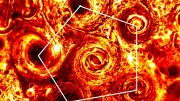
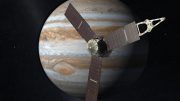
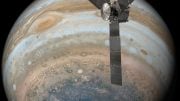
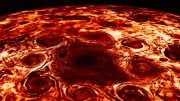
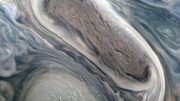
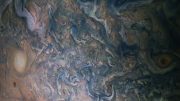
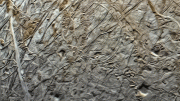
The small vortex of cyclones on Jupiter is manifested by this Jupiter probe. When the great red spot on Jupiter can exist for 6000 year old cyclone standing steady on a surfaceless Jupiter immediately below that level to interact, the micro cyclones also should be there which is nicely brought out by this new photograph. It does not mean that Jupiter is not having a terrestrial ground, but the gaseous envelope is very thick and any plumes from the far lower ground should account for these cyclones in the thick atmosphere by probably volcanoes erupting at great speed. We should not fail to understand that Jupiter is a failed star just like Saturn , Uranus and Neptune to throw a very thick blanket of gaseous atmosphere. Thank You.